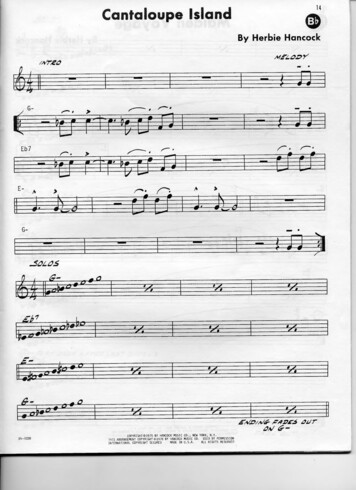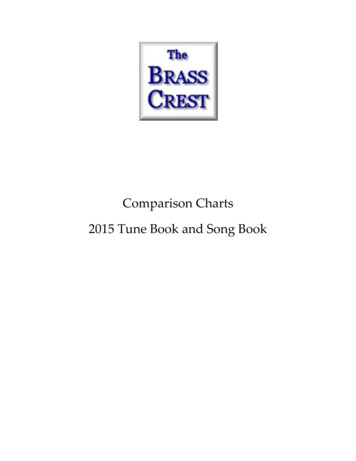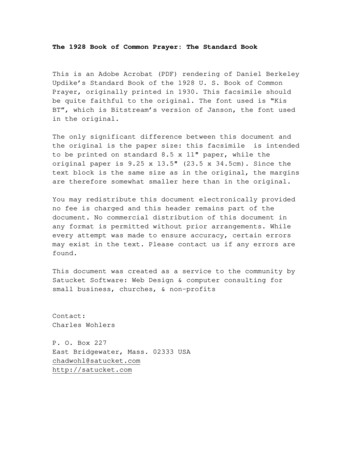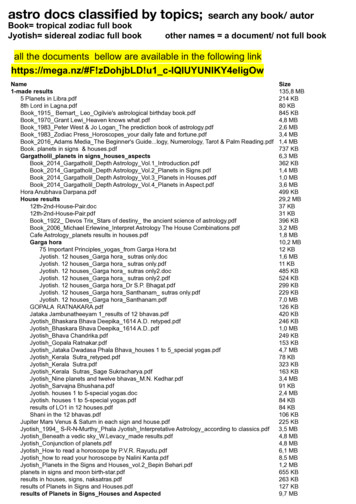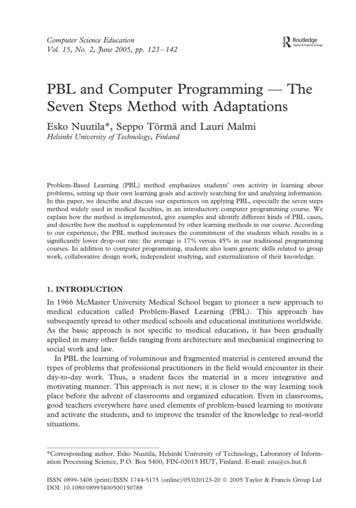
Transcription
STEPSTO THEREAL BOOKA basic Jazz Piano TextBy James Levy 1992-2004
Preface"Fake Books and Real Books and Charts (Oh my!)."Once upon a time, before the rise of the electric guitar, back in the dim dark pastof the early 1900s, Americans out for a night on the town were serenaded by live groupsof musicians. With names that often included the word "Orchestra" or "Band," thesegroups had not only piano, guitar, bass and drums, but trumpets, trombones,saxophones (who "doubled" on clarinet and flute) -- and some groups even sported violins.In order to play the music of the day these orchestras had arrangements, sometimesbought off the shelf--these were called "stock" arrangements or "stock" charts --but alsosometimes arranged specifically for the group itself.Duke Ellington was the preeminent example of a band leader/arranger/composer/genius. Groups that specialized in the blues often extemporizedsongs that, in turn, became fixed arrangements, for example Count Basie's "One O'clockJump."In order to augment their repertoire, groups would also obtain "Fake books," booksof songs in lead sheet format. These books were often published illegally, withoutobtaining and paying copyright, and, in a hurry to get the latest hits out there, rife withmistakes. The musicians would then "fake" like they had an arrangement and deriveparts from the lead sheet, also adding their own vocabulary, that would correspond totheir regular role in the ensemble.Then, sometime in the 1960s, in Boston, Massachusetts, some people decided theywould make The Real Book As they say in their Forward (quoted here withoutpermission)The Real Book is the answer to the fake book. It is an alternative to the plethora ofpoorly designed, illegible, inaccurate, badly edited volumes which abound on the markettoday.The Real Book was painstakingly created because the editors care about music andwant it to be well played and fun to play by you, the musician. "Enjoy!"The Real Book, while being an illegal, underground publication, found its wayaround the world and was and is used widely by students of jazz. While the consensus isthat they did a very good job of selecting tunes to put in "The Real Book, the book doesindeed contain errors, in a few cases it's almost as if they made up a new song ("BlueTrain" by John Coltrane). It spawned the Real Book 2, 3 and a host of other illegalimitators.In 1988 "The New Real Book" was published by Chuck Sher. This legal bookcontains both lead sheets and arrangements and is a big step up from The Real Book interms of accuracy, in many cases the composers themselves reviewed the lead sheets.Then in 2004, Hal Leonard came out with a legal version of the classic The Real Book 6thedition, basically the same tunes as the original, but with the mistakes corrected.One approach to becoming a jazz piano player is to learn how to interpret leadsheet format such as is found in The Real Book. Another approach is to work on playingby ear.Steps to the Real Book helps to foster both approaches. 1992-2004 James D.Levy
Scope of the book This workbook is intended to help a pianist who already has basic technique and musicreading ability to learn to improvise and to use "The Real Book."This book's helps you learn: To play by ear To read and perform jazz rhythms To construct the basic chords and scale/mode forms used in jazz. Basic harmony and to develop the ear and musical imagination through1) playing simple folk music in a variety of keys and styles and2) singing melodies using solfege. To play a blues progression. A theoretical framework for learning chord progressions. To play the most common chord voicings To begin to improvise.Table of ContentsIntroduction:Structuring your practice time:2a 5-part schemeFirst Assignments in each of the 5 partsI. Warm-upsII.Applied TheoryII A. Rhythm ExercisesIntroduction to Scale ConstructionII B. Circle of 5ths; basic patterns for practiceThe metronome in JazzII B. (cont) Basic Chord TerminologyIntervalsII B. (cont) 4 note chords, 7th, 6th and add9Scales/Modes6111111182356789III. Pieces21IV.V.22Tunes and Folk SongsImprovisationA. Basic Pop Improvisation: The 4-bar vampB. Basic 12-Bar Blues ImprovHarmony001252628Past the BasicsTwo analogies and two pet peevesSome hints on Jazz improvisationMaterial for advanced circle of fifths practiceVoicing ChordsChord Substitutions and ProgressionsReharmonizing a tune 1992-2004 James D.Levy3132363842
2INTRODUCTION TO STEPS TO THE REAL BOOKStuff to read and think about before you sit down and practiceWhile it is helpful to first look through the entire book for an overview, much ofwhat is contained here are concepts, activities and exercises that will only be fullyunderstood after hours of practice at the keyboard. Also, despite the fact that the book isfull of suggestions as to how to spend your practice time, it is important to always takethe initiative, to think up new exercises and gnu variations.This is a workbook, write in it, add to it!One of the most important things for someone who wants to play Jazz is to developa good practice routine. Below is an outline that covers five important practice areas.To cover it all in an hour, I would split the time up as indicated. Every practice sessiondoesn't have to have all 5 parts, but try to cover all 5 most of the time.I.II.Technique -- warm ups, exercises and scalesTheory -- rhythm and circle of fifths10 min15 minIII. Pieces10 minIV.15 minV.TunesImprovisation10 minA "Piece" is something that either has every note written out or, even if it isn'tfully notated, is something that you are working on playing basically one way. Foraspiring Jazz students, as you begin to work with lead sheet format, count that time asworking on a "piece," since the new challenge of reading and forming chords whileplaying the melodies with a true swing feel is enough to keep you occupied. In general,the "piece" part of your practicing has you working on the most difficult material.The "Tune" part of your practicing has you dealing with a melody and chordprogression -- both of which are subject to interpretation and change.Typically youwill use material that is easy enough for you to play by ear and to play in a variety ofkeys, styles and textures. Four different versions is a good target."Improvisation," at least the standard type of improvisation in Jazz and popularmusic, means creating melodic ideas over a repeating chord progression. At first most ofthe improvisation will happen in the right hand, while the left hand keeps the chordprogression.In order to really jam using a "Real Book," it is not enough to simply learn to readthe chord symbols and to know how to swing. You must also be able to play by ear and befamiliar with the basic conventions of Jazz harmony.Learning to improvise means that two things must be developed: the creativeimagination and the ability to play by ear. Playing by ear is developed by singing (esp.with the solfege syllables--do, re, mi.), playing tunes in different keys and "picking out"tunes on the piano. The creative imagination is developed every time you learn a newsong (story) and every time you tell an old story with a new twist. Taking a solo in Jazzhas traditionally been described as "telling a story." 1992-2004 James D.Levy
3Tenor saxophonist Illinois Jaquet, in an interview for Dizzy Gillespie's memoirs "ToBe Or Not To Bop," offers this insight;You see in Louisiana, where I think that Jazz was born--I was born inLouisiana, so quite naturally ever since I can remember, we've been listeningto Jazz music--From the time when they played it right from the ear becausethere was no time to study music, I imagine they just played.Learn thatsong, learn it fast learn it slow, play it in waltz time. It was the same song.(To Be Or Not To Bop, p. 146)***********************************The Practice routine: Like learning a language.(Analogies 001)Learning to play Jazz reminds me of learning to speak a foreign language. Most ofthe activities that go into learning another language have their counterpart in Jazzstudy. One of the most important activities for language students is listening to a nativespeaker; some students will even spend a semester or year abroad. For a student to gainan authentic Jazz sound, immersion in Jazz listening, both live and recorded is essential.One Jazz player I know said that he thought it was beneficial to listen to the same recordevery day for several weeks until you can "hear the record in your head."I.Technique is like dictionSimple technique exercises such as scales and Hanon have their counterpart in thephonetic and diction drills that students must do in order to learn foreign sounds. Just aswe exaggerate pronunciation when we do diction exercises, we exaggerate fingermotions in many technique exercises. In terms of playing by ear, part of the technique isto be able to sing what you play.II.Theory is like grammarOne of the most important requirements for beginning fluency is pattern drills. Alinguistic example would be repeating, over and over, "I am, you are, he is, etc." Inmusic, rather than matching the same verb with all the different possible subjects ortenses, you match the same musical idea (chord, scale, riff or song) with all twelve keys.Practicing in all keys has been part of the keyboard improviser's training forcenturies. Two of the most important "classical" authors on the subject, Carl Czerny andC.P.E. Bach make this point repeatedly in their treatises. The importance of this activitycan only be appreciated after some degree of mastery. In addition to learning thespecific materials in all keys, one also learns the general feel of each key.When a idea is played in only one key, that idea may be remembered a variety ofways, by sound, by feel, or even by the names of notes. When an idea is learned in allkeys it then becomes more efficient for the mind to remember it in terms of sound -- themost musical way of thinking Then through intensive practice over time, a layer ofcognition is developed which functions to put the idea into the specific key, without anyconscious, mechanical thought on the part of the performer. Essentially, you think likea singer. 1992-2004 James D.Levy
4Just as grammar reveals recurrent patterns of deep sentence structure (e.g.Subject-Verb-Object), study of harmony reveals recurrent chord progressions (e.g. IV or ii V I).IVIII. A Piece is like a PoemReading compositions is another activity common to both learning Jazz andlanguage. Like actors, who in order to learn their lines practice paraphrase, Jazz playerscan adapt techniques and concepts to their own playing. The Jazz practice of "quoting" isthe clearest example. This is when a Jazz musician interpolates a recognizable musicalfragment (such as a nursery rhyme or operatic theme) in the middle of an improvisedsolo, often with humorous effect. Prime practice material for Jazz musicians includesBroadway and popular songs, Ragtime (for left hand development) and impressionisticand modern piano works (for chord voicing and harmonic concepts). For this part ofyour practicing you'll obviously have to go outside this book.IV.A Tune is like a Fairy Tale.in the sense that even though many different versions exist, you can stillrecognize the story instantly, even when the storyteller is using their own words ("Dagman, you can never tell what kind of food you're going to get on the road,"sighed Goldilocks as she gingerly tasted the first bowl."). Of course there is also the useof stock phrases and licks (see, for example, the opening 4 words to the preface of thisworkbook). One of the main features of your tune practice is playing these tunes in avariety of keys. While the ability to play in all keys has only been a central part of Jazzsince Bebop, playing by ear (closely related to, but not the same as, improvising) hasalways been essential to playing Jazz.Transposition, playing tunes in different keys, is an excellent way of developingthe ear. The process should really be a matter of orienting oneself tonally in the newkey, then simply thinking the song. Professor Ron Elliston (University of Maryland) putsit like this, "You learn a tune in a particular key, then improvise it in another key." Thisstatement underscores the concept of hearing the music in your head, then being able torealize it through your instrument. A pianist who cannot play a simple tune by ear, such as "Michael Row The Boat Ashore,"is not ready to try and improvise Jazz.You should be able to sing the melody (more or less in tune) to any song you play.V.Improvisation is like conversationWhen you converse in language class, typically the teacher doesn't just say "talk,"but rather a subject, such as "the weather" can be assigned. This enables the student toprepare by studying the appropriate set of vocabulary choices, and think about whatthey want to say. Adjunct topics, such as what clothes to wear in what kind of weathermay be considered. InJazz improvisation, the format is also usually circumscribed: achord progression is given and some kind of groove, for example, "medium swing," is set.Finally, just as when we study a language, when we study Jazz we can differentiatebetween practicing for improvisation and the actual act of improvising. All the patterndrills, grammar/harmony study, etc. are designed to move material from the conscious(limited) mind to the unconscious (unlimited) mind.The language student must eventually dispense with translation and begin tothink in the new language. The beginning student thinks, e.g. "Jolie" "Beautiful," in 1992-2004 James D.Levy
5French." For the bilingual speaker, "Jolie" is a concept unto itself, as subtly differentfrom "Beautiful" as Paris' fashions are from New York's. A beginning Jazz student maytranslate quasi-verbal thoughts into musical ones; a thought like "O.K. now I'll use the iiV lick that I practiced," will then be translated into the musical notes. The fluent Jazzpl
The Jazz practice of "quoting" is the clearest example. This is when a Jazz musician interpolates a recognizable musical fragment (such as a nursery rhyme or operatic theme) in the middle of an improvised solo, often with humorous effect. Prime practice material for Jazz musicians includes


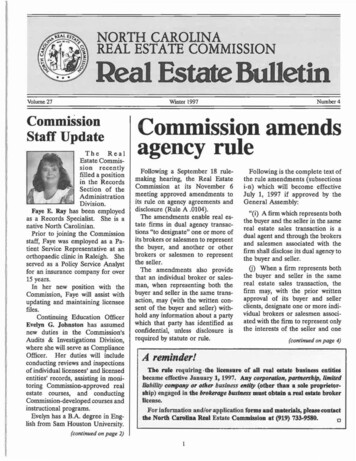
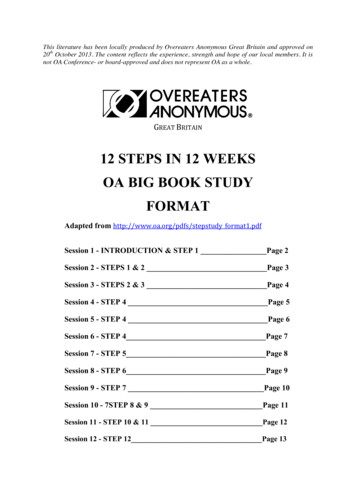
![[EPUB ] The Bob's Burgers Burger Book: Real .](/img/6/the-bob-039-s-burgers-burger-book-real-recipes-for-joke-burgers.jpg)
